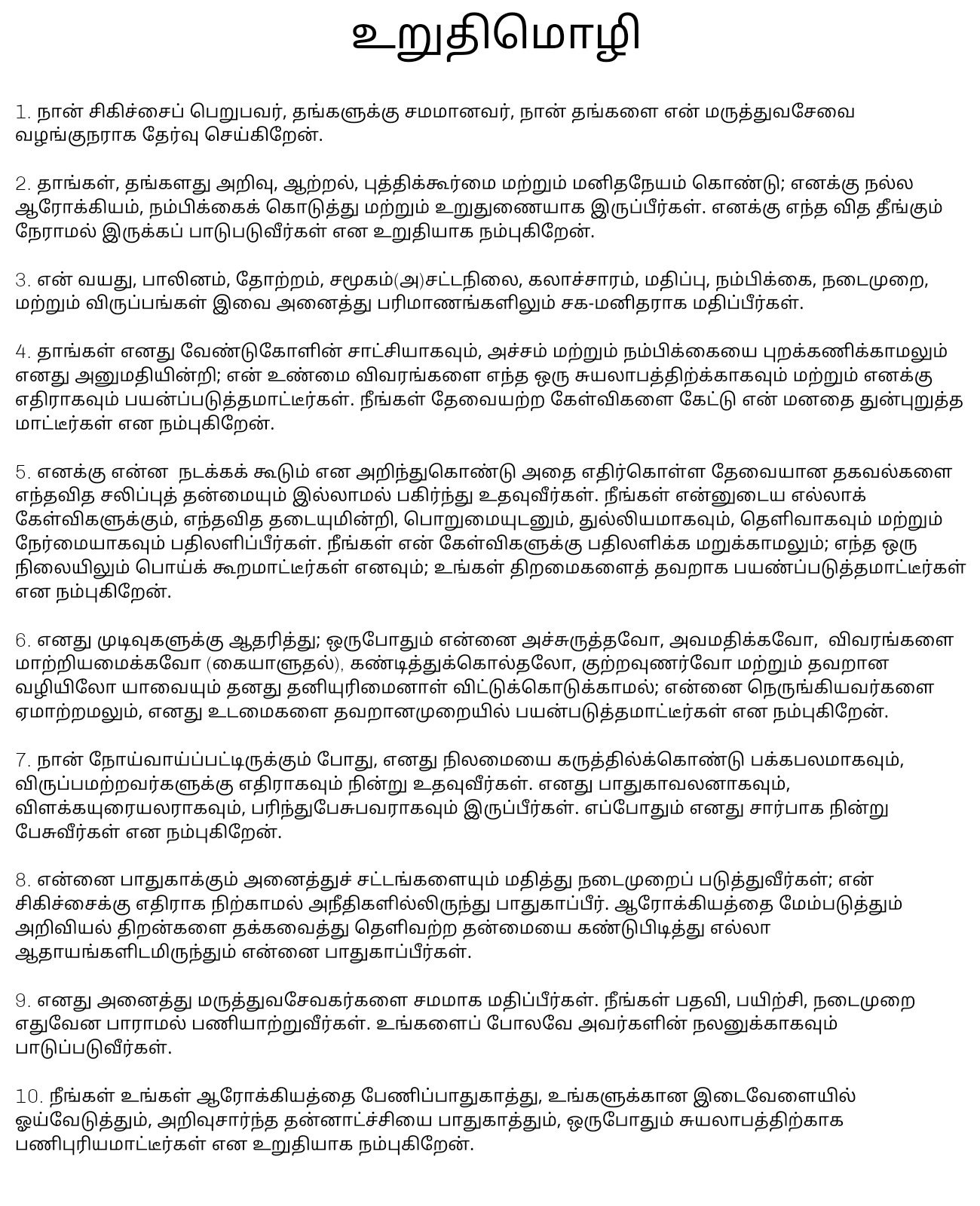Importance of a Good Therapeutic Relationship: The Pledge
Joshua Samuel RAJKUMAR, MPT, CSTP©[1], Kaviyarasu MANICKAM, BPT(c)[2] & Boobesh KRISHNAN, BPT(c)4
When an individual steps into the clinic with the need for help from us, rehabilitation professionals, what we offer changes not only the primary problem they are presenting with but also other secondary issues that may or may not have an influence on their primary problem at hand. Along with the physical health issues, the patient also brings psychological stressors like anxiety, fear, and related emotions. (1,2) These psychological stressors have also been shown to aggravate their presenting physical illnesses. If not addressed or minimised in the healthcare professionals’ approach to communicating with the patients, the treatment outcomes that depend on the patient’s behaviour may not be as expected. Many times, if there is an effective relationship between the patient and professional, what we term a "therapeutic relationship" (3-6), these changes have a significant positive impact on the recovery.
A healthy therapeutic relationship is thus crucial to the overall recovery in any rehabilitation process, be it orthopaedic, neurological, cardio-respiratory, sports, or other specialties, or even other rehabilitation fields like occupational therapy, speech therapy, and others. Understanding patients and their behaviours has been reported to increase positive treatment outcomes. This understanding comes with a good relationship between the patient and the therapist based on effective communication, trust, commitment, and respect for each other. Additional factors like understanding emotions, and the ability to empathise are also crucial for establishing a good therapeutic relationship. Professional compassion and empathy have been shown to improve patient satisfaction, reduce anxiety and stress, and strengthen the professional-patient relationship. (7-12)
In view of this, we were very impressed by Winckler M.'s 2023 article "The Chart" on Somatosens Pain Rehab 20(1), which described ten key statements from the patient to the professional taking up their therapy or treatment process. (13) Each of these ten key statements exposed the need for understanding the importance of a therapeutic relationship, as discussed above. Hence, we decided to translate this article in our native languages, starting with Tamil in the present article, which we believe can help educate the patients on the importance of establishing equality in the treatment process and, establish a stronger therapeutic relationship. The translation, re-translation and, proof-reading was done by two independent reviewers with the subject who also have the knowledge of this native language to make sure the original content is not changed.
There would be further translations of the statements into other indian languages to help spread these key statements across different populations in India and across the globe.
Acknowledgement
We thank Spicher CJ., for permitting us to translate the original article “The Chart” by Martin Winckler published in Somatosens Pain Rehab 2023. (13)
References
Schneiderman N, Ironson G, Siegel SD. Stress and health: psychological, behavioral, and biological determinants. Annu Rev Clin Psychol 2005;1:607-28.
Miller GE, Cohen S, Ritchey AK. Chronic psychological stress and regulation of pro-inflammatory cytokines: a glucocorticoid-resistance model. Health Psychol 2002;21:531–41.
Kayes NM, McPherson KM, Kersten P (2015). Therapeutic connection in neurorehabilitation: theory, evidence and practice. In Demaerschalk, B., Wingerchuk, D., Uitdehaag, B. (Eds.) Evidence-based Neurology: Management of Neurological Disorders: An evidence-based approach, 2nd edition. BMJ Books, John Wiley and Sons.
Jensen, K., Kelley, J. M. The therapeutic relationship in psychological and physical treatments, and their placebo controls. Psychology of Consciousness: Theory, Research, and Practice 2016;3(2):132–145.
Monaco S, Renzi A, Galluzzi B, Mariani R, Di Trani M. The Relationship between Physiotherapist and Patient: A Qualitative Study on Physiotherapists' Representations on This Theme. (Available): https://www.ncbi.nlm.nih.gov/pmc/articles/PMC9690429/pdf/healthcare-10-02123.pdf (22.05.2023)
Klaber Moffett J.A., Richardson P.H. The Influence of the Physiotherapist-Patient Relationship on Pain and Disability. Physiother. Theory Pract 1997;13:89–96.
Taccolini Manzoni A.C., Bastos de Oliveira N.T., Nunes Cabral C.M., Aquaroni Ricci N. The Role of the Therapeutic Alliance on Pain Relief in Musculoskeletal Rehabilitation: A Systematic Review. Physiother. Theory Pract. 2018;34:901–15.
Bishop M, Kayes NM, McPherson KM. Understanding the Therapeutic Alliance in Stroke Rehabilitation. Disability and Rehabilitation 2021;43(8):1074-83.
Schönberger M, Humle F, Teasdale TW. Subjective outcome of brain injury rehabilitation in relation to the therapeutic working alliance, client compliance and awareness. Brain Inj 2006;20:1271–82.
Emery C.F., Leatherman N.E., Burker E.J., MacIntyre N.R. Psychological Outcomes of a Pulmonary Rehabilitation Program. Chest 1991;100:613–7.
Cole M.B., McLean V. Therapeutic Relationships Re-Defined. Occup Ther Ment Health 2003;19:33–56.
Barber JP, Connolly MB, Crits-Christoph P, et al. Alliance predicts patients' outcome beyond in-treatment change in symptoms. J Consult Clin Psychol 2000;68:1027–32.
Winckler M. The Chart. Somatosens Pain Rehab 2023;20(1):20-1. Available: https://www.somatosenspainrehab.com/articles/the-chart(22.05.2023).
[1] Consultant Physiotherapist, JOSH Clinic, Bangalore, KA, India.
Email: joshphysiotherapist@yahoo.com
[2] The Oxford College of Physiotherapy, Bangalore, KA, India

